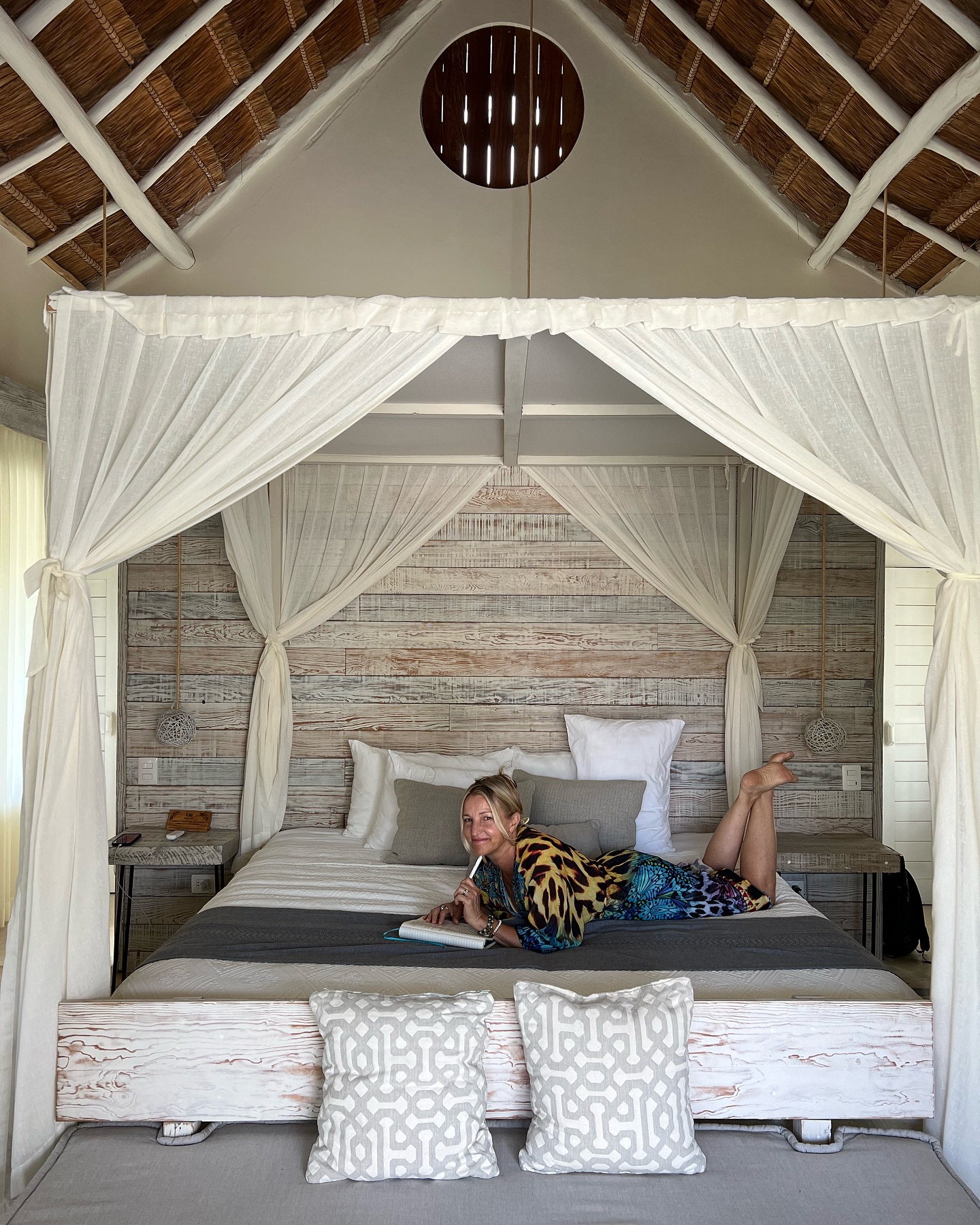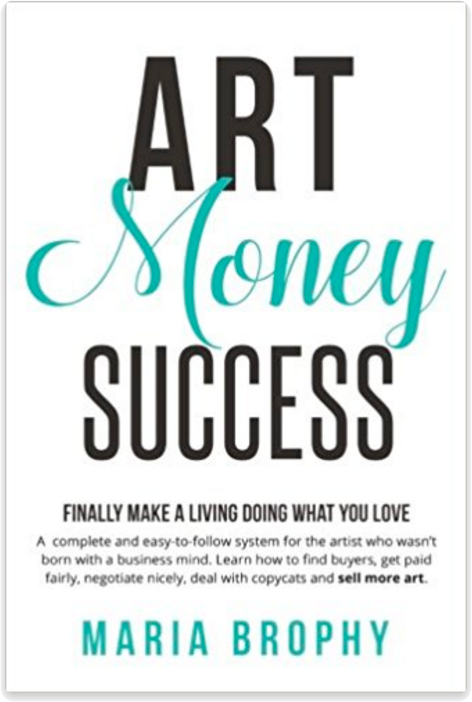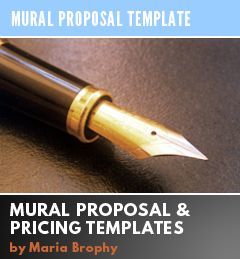 Just how much are your opportunities really costing you? Do you take the time to determine your expenses vs. your profit?
Just how much are your opportunities really costing you? Do you take the time to determine your expenses vs. your profit?
Before you commit to an event or exhibit, you need to look at the numbers and know exactly how much money you are going to spend, how much you are going to make, and what expenses are involved with that commitment. Otherwise, you may find yourself putting out more than you take in.
A successful business, whether you’re an artist or a florist or a woodworker, is where you are bringing in more money than you are sending out. Profit = Income – Expenses. Forgive me if I’m telling you something simple that you already know, but trust me, some creative professionals need to be reminded of this.
The artists who look at the actual numbers before they enter into an agreement are the ones who will, in the end, find financial success. Why oh why don’t they teach this in art school?!
Sometimes we get so caught up in the excitement of an opportunity that we don’t stop to think about what it’s costing us.
Take, for example, the happiness you feel when you are invited to exhibit at a gallery. You are flattered that someone would appreciate your art enough to display it on their walls. And in some way, you see it as validation of your talent.
You go out and buy all of the materials you need, the canvas, the frames, the paint. You plan out a series of paintings and put in the hours and months. You deliver the masterpieces and the space in which your art is hanging looks fabulous. You did a great job. The gallery is pleased. Your art made them look good. (And they didn’t have to pay you dime.) Now it’s out of your hands. So is something else – money. Unlike all other businesses, you don’t get your money back unless or until something sells.
Then, as time goes on, you aren’t making it. You’re forced to keep that “other job” that you can’t wait to quit so you can be a full-time artist. Your bank account is shrinking, but you’re not sure why. “I guess this starving artist thing is true” you think to yourself, disappointed.
It could be that you are giving too much for too little in return. In business we would call that a losing proposition.
Imagine going into the Bank of America asking for a business loan. You explain that your business plan is to produce wonderful artwork, spend a lot of money on supplies, deliver it to the retailer (gallery) and then wait and see what sells. If it doesn’t sell, you have to pay to ship the goods back and start all over again.
If you tried to get a business loan with that plan, they’d laugh you all the way out of the bank!
But for some reason, many in the art world think this is acceptable. Due to the fact that “it’s always been done this way,” we don’t blink an eye at the thought of putting expensive artworks into a gallery, paying the shipping fees, and then only getting 50% back (which, after the artists’ expenses, it’s actually about 30%).
The gallery honeymoon is over as soon as we realize that this old system can be a financial drain. But, thanks to the internet, times have changed and artists can sell artwork directly to collectors, thus giving themselves better pay and control over their careers.
That being said, it would be blind of me not to acknowledge that there are many different ways to run your art business, and not one size fits all.
For a small percentage of artists, the gallery system works. And when I say “works”, I mean that it supports them financially. This percentage is so small that I rarely meet artists who do make a profit solely from the gallery system. Good for them – I cheer them on!
But, most everyone else is supplementing their gallery income through a second job or a spouse or other forms of art sales.
And though I write about this often, I can’t say it enough. Artist’s have to be responsible for their own financial situation. And the best way to take control is to look at your numbers.
FALL IN LOVE WITH THE NUMBERS, EVEN IF YOU HATE THEM
I’ve worked with a business coach, Ralph White, off and on for a few years. He taught me to enjoy numbers. “But I don’t like numbers, Ralph,” I’d complain. He would encourage me, and thanks to his nagging, I’ve gotten over it and run our business to make a profit. It’s what’s helped us survive the recent downturn in the economy.
Ralph told me “Don’t run your business like it’s going to pick up later. Run your business to make a profit, right now.” Makes sense, doesn’t it? Sometimes we need to be reminded…
Every single thing we do has to net a profit, or it may not be worth doing.
This year I turned down several promotional events because it was going to lose us money. And the companies that really wanted us there? They paid our entire way – airfare, hotel, meals. Suddenly, our bottom line is looking really good.
You don’t like numbers? Neither did I. But as soon as I realized how much money we were losing making others look good, I changed my ways. And I implore you to, as well.
It will make the difference between being able to do what you love for living, or having to do that which you don’t love just to survive.
ARE YOU PLAYING THE ROLE OF AN ART BANKER?
Drew and I made the decision to get out of the art banking business a few years ago. It’s done wonders for our ability to focus on making more money for less work. Let me explain:
ART BANKER is my affectionate term for the person who spends their own money on supplies and time creating artwork that they then “loan” on consignment. They don’t have a guarantee that this “loan” will ever be paid back, but if it does, it’s usually 6-12 months, interest free for the gallery.
If you ever wonder why some artists just can’t support themselves, this could be one of the reasons. This is a bad, bad business plan that for most people will fail.
THE ECONOMY HAS CHANGED MY BAD WAYS AND FORCED ME TO SCRUTINIZE THE NUMBERS
In 2009 our gross income of selling Drew’s art was down almost 50% from 2008. The economy really pinched us. But if there’s one good thing that came out of last year’s squeeze, it was that we were forced to scrutinize the numbers with everything we do.
When I pulled out the magnifying glass and began to see clearly just how much some of the “great opportunities” were really costing us, I was surprised at how much we spent to make other companies look good.
Recently Drew was asked to have a solo art exhibit in a gallery in Hawaii. They offered to cover shipping of the artwork and pay 60% once the artwork sells.
Often we get offers like this. And rarely do we say yes because of the cost involved. First, I want to say that we fully appreciate that an upscale gallery wants to represent Drew. It’s flattering and it evokes this great vision of us being able to go to Hawaii on business and sell artwork. Who wouldn’t want to do that? But the numbers didn’t add up.
KNOW THE NUMBERS AND WHAT IT’S COSTING YOU
I ran it through our policy called The Profit Policy. (Please copy and use this for yourself.)
In order for us to say “YES” to any new project, event or venture, it has to meet all four of the following criteria of The Profit Policy:
- There is a profit in it
- It does not require us to be an Art Banker (we don’t have to front money for expenses and supplies)
- Our travel and material expenses are paid for
- It will be enjoyable to us
There are exceptions to every rule, and here’s an exception to the above: If there’s no profit but it’s an excellent marketing opportunity, it it exposes Drew’s art to a large number of people, guaranteed, AND if they cover travel expenses, we’ll do it.
WEIGH THE PROS AND CONS AND KNOW YOUR COSTS
Sometimes it’s worth it to spend money to get an opportunity. If you’re an emerging artist, it may be required for you to put yourself out there and exhibit in galleries and play that game for awhile. But please, don’t stake your career on it. And once you’ve been in the game for a few years, stop giving more than you’re paid. You can’t sustain yourself that way. Not only will you go broke, you’ll burn yourself out.
HOW MUCH IS IT REALLY COSTING YOU? FIGURE IT OUT
Take the time to figure out how much an exhibit or event will cost you. Make a spreadsheet and figure in everything, including gas and materials and travel meals. Get in the habit of knowing exactly how much money you’re making in each gallery you exhibit in. Become familiar with numbers and always know how much profit you’ve made.
Sometimes looking at the numbers can be downright disappointing and scary.
But there’s power in knowledge. A wise (and rich) friend once told me “numbers don’t lie.”
The numbers will provide you with the knowledge you need to make the right decisions.
IF YOU FIND THAT YOU ARE LOSING MONEY WITH A GALLERY OR PARTNERSHIP
If, after looking at your numbers, you find that you are losing money with certain galleries or partnerships, there are a couple things you could do:
1 – Ask to renegotiate your arrangement. Show them the numbers and tell them that this isn’t a good business move for you. Ask that they increase your percentage so that it makes sense for you to continue. Most people will not want to see you lose money and they will work with you on this.
2 – Leave the situation that’s losing you money. This way you are freed up to focus on new relationships that will earn you a profit.
CRUNCHING THE NUMBERS WOKE ME UP
So, back to the Hawaii opportunity. We wanted to make this work, because the owner of the gallery is one of our best clients through another business and we know that anything that he does is top notch.
But nothing ruins the fantasy of being in Hawaii like the reality of the expenses. This is a great example of how seeing the numbers is a like a cold slap in the face!
Below is a list of the expenses we estimated for Drew to paint in Kauai for 3 weeks prior to his solo show. (It’s safer, easier and cheaper to send Drew there to paint on-site, rather than paint here and ship a crate, since his pieces are large and a few are fragile surfboards. It’s very expensive and risky to ship that stuff.)
| Airfare | $600 |
| Rental Car | $1,500 |
| Art Supplies and framing | $2,500 |
| Food & Misc ($75/day x 21) | $1,575 |
| Luggage/Check in/Taxes | $ 300 |
| Accommodations 21 days ($75) | $1,575 |
| TOTAL Expenses | $8,050 |
If our total expenses are $8,050, than we have to gross $25,000 (we keep 60%) on opening night just to cover our expenses and pay Drew for his three weeks of work.
It’s possible to gross $25,000 on opening, but it’s not guaranteed. And in this economy, there are safer risks we could take. Such as, paint the paintings here and sell them ourselves and take a real three week vacation instead! (See how my mind works?)
I was so frustrated when I realized that it would be financially corrupt for us to do a show in Hawaii. How do other mainland artists do it, I wondered?
To find my answer, I called a friend who has great success selling his artwork Hawaii. I thought for sure he would tell me that the galleries cover his costs. He flies to Hawaii every summer to paint on site, and he spends a month at time there. I was dismayed when he told me that he covers all his expenses. But he has a friend that he can stay with for free. The galleries he works with keeps 50% of the sales – this also disappointed me. He explained that in his case, he sells many pieces for $6,000 or more and in the past 3 years he’s sold over 50 paintings in Hawaii. He assured me that he is making a profit and that it’s been a great deal for him.
I suppose if you’re going to exhibit in just one gallery that far away, it doesn’t make financial sense. You’ll lose money on the shipping, materials and travel expenses. But if you plan to focus your efforts on growing your presence in many galleries in that area, it can pay off.
For us, we decided that instead of playing “Art Banker”, we would offer the Hawaii gallery Drew’s original paintings at a greatly discounted wholesale price. I sent a letter to the gallerist and explained why we weren’t able to place artwork on consignment (it’s not a fit with our business model of making a profit), but that we will give deep discounts if they purchase the paintings and pay at time of delivery.
Gladly, he was open to that and showed interest in Drew’s smaller, less expensive pieces. He understood the economics of fronting money for no guaranteed return – he’s a businessman after all.
And that’s when I came to another realization – there’s no “one way fits all.” I think gallery owners are starting to realize that, just like other retail stores, they have to pay for their inventory sometimes. And this is a change that all artists can live with.
The next time you are invited to do a show, or a promotional event, ask yourself the four Profit Policy questions. And if you find that you won’t make a profit or even break even, do something most artists are afraid to do: Ask the host to help cover the travel expenses and/or supply costs. You might be surprised when they say yes.
Maria xxoo
(Art Credit: Pierre Bouret)
.















32 Responses
I love the term “Art Banker”! I have fallen into this trap a couple times, and I hope I am getting smarter about it.
The challenge is that the profitability of an opportunity can’t always be easily calculated. I am in a situation right now were I have a number of my pieces hanging in a resort on consignment. It was a big up front expense, and I knew that there’s be little chance for sales. But I also had to weigh the marketing benefit. I’ve been trying to convince art consultants that my work belongs in a resort, and here was an opportunity to prove it. I managed to get some good photographs of my work hanging in their spa, and hope that this will help drum up future business. Will it pay off? We’ll see – but this time it felt like the risk was worth it.
Thanks, Daniel for your comment! Yes, I agree that sometimes we have to take risks. The most important thing is that you KNOW how much the risk is costing so that you can later analyze if it was a profitable or good thing to do. I hope it works out for you – let us know or blog about it!
True! I guess the lesson is, always be aware of the value of what you do, and make sure you are being compensated for it *somehow*. Back in my previous life (creative director at an internet company) we did a lot of bartering for our marketing. We loved being generous, but we also quickly learned to recognize the value we brought to the table.
Sometimes difficult to measure the value of the opportunity in dollars. I just did my first big craft show. There were a number of expenses: the booth space, display fixtures, table, umbrella, setting up to take credit cards… I paid for my booth and umbrella but took a loss on the other expenses. I have a few other craft shows lined up so that’ll take care of the rest. So, right now I’m not making a profit. BUT I did this for the exposure and the feedback. A few thousand people walked by and I got to introduce myself to a whole new market plus I am getting acquainted with the demands of manufacturing and retailing. I wonder how to put a price on experience?
Maria,
I love it when you talk numbers. Somehow in your blog numbers are less scary then in quickbooks. In my Industrial Design consultancy, I often debate the real cost of work. Sure I can give away a couple hours here and there and consideri it business management or marketing overhead. But what did that REALLY cost me? It is often hard to predict what you could have achieved if you had not wasted all your time on BS projects. When it comes down to these things I always try to consider how much RISK I am exposing myself to. I do not invest in project materials at all. I aways tell my clients I mark up materials 30% and I need a deposit to start. I always suggest that they can take the time to purchase and deliver materials to me, but they never want to. What you are telling me is that the art Galleries have transfered ALL of the risk of an ART SHOW onto the artist. Hummm, even in the music business the artist gets an advance on sales.
Dustan, this topic truly does apply to all business, not just art. And to clarify, artists typically do carry the risk of the selling of their art in galleries. However, galleries have other costs associated with having a retail space – rent, electricity and the occasionally wine and cheese set up. But most retailers are used to paying for their inventory – where galleries are not.
More and more galleries are either buying art up front (at greatly discounted wholesale pricing) or paying artists a higher percentage.
My hope is to see this become the norm rather than the exception!
Maria – this post is the reason that I questioned how do I figure out the cost per square inch of a painting! The entire Profit -Expenses =Income isn’t just applied to opportunities, it applies to your entire art business!
This is what I am struggling with at the moment, as are many other artists.
Enjoyed the article.
Yes, calculating the profit makes sense.
But still I am left wondering how much to spend on promotion.
If I have several sets of 500 postcards of my art works printed to promote that way. Postage to mail/envelopes. It costs more than shipping some paintings to an exhibit and getting exposure that way. Lots of things for me to consider. Thanks for the food for thought !
I under stand what you are saying but have moved here from Thailand. In Thailand I was well known. Here nobody knows my face. I am a single parent of an autistic child. I am in the wrong location and market for local sales. In Thailand and other Countries I knew the market but here am like a baby. As I do not know any Galleries or other venues that have similar tastes as mine. I know that it is wrong to enter art competitions from any Gallery that will receive them.. But I don’t know what else to do. can you give me any guidance?
Maria, you’re so right. It’s not just the solo exhibitions either. Some galleries’ commissions are a lot higher than others, and some have slower payouts than others. There’s a lot that you need to do your homework on, once you’ve gotten over the initial hurdle of getting accepted into ANY gallery.
I’ve experienced commissions as low as 33% (a long time ago now) but I have heard of up to 75%. Every 1% makes a big difference to an artist’s bottom line! And some galleries insist on them framing everything an artist supplies so they get more profit from the artist, whether the work sells or not.
If a work sells on a time-payment basis some galleries will pay you as they are paid, but most will wait until they’ve been paid in full.
You need to ask what the policy is on payment times, and preferably, if you can swing a bit of weight, negotiate on your terms. I once negotiated terms of payment within 48 hours of a sale and 40% commission, but you have to have pretty hot-selling work for a gallery to agree to terms like that.
An art gallery is (usually) a retail store with free stock! They should be representing the artist, and for the free stock an artist supplies them they should be trying to satisfy the artist as their highest priority! Unfortunately that’s not commonly the way they think.
Maria, I’m interested in hearing your thoughts on “pay-to-play” art shows too. I’ve been asked to pay to be in art shows for the “exposure” and then sell tickets for people to attend the art show… Have you heard of this?
We were asked once by a gallery owner to pay for all the expenses with opening night – it was about $400.00. We refused – we already had spent thousands just on canvas and framing.
I used to hang out on Sunset Blvd. in Los Angeles in my younger years. I never went to the nightclubs where the bands “paid to play” because usually they weren’t any good.
That same thought could be applied to artists who “pay to exhibit”. Once a gallery is known for giving exhibits only to artists who pay, than the public comes to know that anyone who’s willing to pay can get a show.
If an artist is truly just starting out, maybe doing one “pay to play” would be okay to get experience. But someone talented and experienced like you, Aileen, should never pay to play.
A great alternative to “pay to play” would be to get a group of your artist friends together, rent a space for a couple months, and do your own show. That way, you keep 100% of your sales proceeds, you get to do it your way, and you are teaming up with other artists.
Yeah, I feel the same way, Maria. It’s good to hear your take on it too. I love your suggestion of getting friends together to rent a space for an exhibit. I’ve been seeing more and more pop-up shops and galleries lately. It’s really inspiring to see artists doing it themselves and supporting their community. Thanks! : )
You always give such great anecdotal tips and advice! I do this every time with any event, where I’m asked to exhibit! I’m so glad that people like you are getting the word out. Now all we have to do is get the public to realize that art is a business, too! It’s hard to have an event at the same time, near a place that selling all art, any size for $19.99! Ugh!
Maria – superbly written as always. This is so refreshing to read because it’s almost verbatim to my business model.
I recently had such a “great” opportunity from a gallery owner in Cali and Hawaii. They were shocked when I told them I don’t do consignment. I was more shocked when they told me some big name artists whom I respect that work with them as “art banker”.
The gallery game is definitely not the only game in town.
I am glad and saddened by this article. I have fallen into this rouse. I have shown 6 times this year, with two more shows coming up. I haven’t sold anything this year.
I spent a lot of money on one of these shows this year. I have a website and I want to sell from my site as well. I haven’t made sales there either, but I would rather sell online and keep more profit for myself.
What do I do now?
Carol-Anne, thanks for the comment. And to answer your question, “What to do now?” Here’s my suggestion: Since exhibiting at shows isn’t working for you, move your focus, energy and money to try something else. Ask yourself “Who / what co / etc. would benefit, like, want what I’m doing?” And then try another avenue to get your work out there.
You have to keep trying new things – when one doesn’t work after a while, then move onto another until you hit on what’s working for you.
I wish you the best!
aloha Maria!
just now seeing this article. I Love it! GREAT subject and as always an encouraging and well-written article. i am still in the art-banker business. i think of it as a marketing expense. there is still an advantage for me in partnering with galleries as i build my name. hopefully when i am a juggernaut artist like Drew, i can be more demanding!
Regarding aileen’s note (hi aileen!), i think that would be an ok idea IF the organizers were bringing in tons of buyers and selling art with their collector base. i researched the organization that is working that scheme in OC, and i didn’t feel like they brought enough “to the table”, so i passed.
Regarding the cooperative show idea. i have been doing shows like that for a while now…we even did a show last year where we collected $10 from each artist to cover booze, food and marketing costs, and offered a 20% commission rate for artists that showed up the the opening and worked a short shift at the gallery (the Promenade). it was a wash for me and i wont be doing that again!
running shows is really fun…really a labor of love, but for me, even though we have sold some art, it has been a money pit.
YES! People refuse to see artists as business people because we refuse to behave as if we’re in business. Thank you for this amazing site and this wonderful article.
Maria,
Hola from Miami, FL. It is so nice to meet you! I truly enjoy reading your blogs. I really want to thank you very much for all this valuable information that you are sharing. Since I discovered your website, I haven’t been able to stop reading. I am learning a lot from you. Thanks again for your great advises!
I do have (2) questions, that I don’t know yet, if you answered before in your site. I would like to know if an Artist can change the price of their work, if a Gallery owner wants to charge you a higher percent off your work? This happened to me in the same State, but in a different County.
Details: I made an oil piece 16 x 20. The original cost: $500.00 (based on the size, materials, the frame and the time spent) The 1st Gallery owner was charging me only a 20% off the sale, and the other one wanted to charge me a 60% off the sale. The 2nd one explained me that I was not suppose to do that, that I have to honor the original price. I wanted to honor the original price, but I didn’t expect such a high percent off, from the Gallery. How would you manage this situation? 2nd question: How do you choose your artistic name, for branding purpose, when you have more than (5) legal names and more than (3) nicknames, husband’s last name? Do you think is better to use a last name, a nickname, a real name, your initials? Please, help, help!!! Thanks again in advance!
Wow Chris, that is a frustrating one. The highest gallery rate i will work with is 50%. and that is for a first rate gallery with an established collector base that is doing a ton of hard work to promote the show with traditional AND online promotion. And if i have a painting for sale at a legitimate gallery with a 20% load and i move it to a higher rate gallery, i have to raise the retail price to cover the higher gallery load.
and finally, i LOVE your artistic name question! goodluck with that!! BigToe
Thanks BigToeArt,
I’m sorry for the late, late reply and yes, Hopefully Maria will make some time, of her busy time, to answer this question. It will be awesome to read about this topic on how to choose your artistic name. I have so many names, and sometimes I feel that each name comes along with their own different personality…Uff is complicated! Thanks again!!! Maria auxilio please on this topic. Thanks!!!
To answer the question posed by Chary and Chris regarding – how do you choose your artistic name, for branding purposes?
It’s important to make one choice and stick with it. Now, how to make that choice?
If you have several names that you go by (as in your case, Chris), then choose the name that best fits this criteria:
1 – It feels good to you
2 – It’s not a too common name (i.e. John Smith vs. Vallie Funk)
3 – It’s the easier one to spell and sign
4 – You can get the URL for it for your website (your web URL should be your artistic, branded name, if possible).
Hope this helps!
Thank you very much Maria 🙂 God bless you always!!! Thanks for helping us in this journey! We truly appreciate your valuable information and feedback. Thanks again!!!
And yes, it was very, very helpful your input! I will keep using Chary, which is the short version of my 3rd legal name; as my branding name, for branding purposes. Thanks Maria, you are the best. God bless you!!!
Maria, I just read this and now know that after doing some figuring, I’ve decided not to do a show that will be too chancy. No guarantee if I will sell anything.
I’m already committed to one this August. Do you have a post on the best way to create buzz on a local event online if most of your followers are not local?